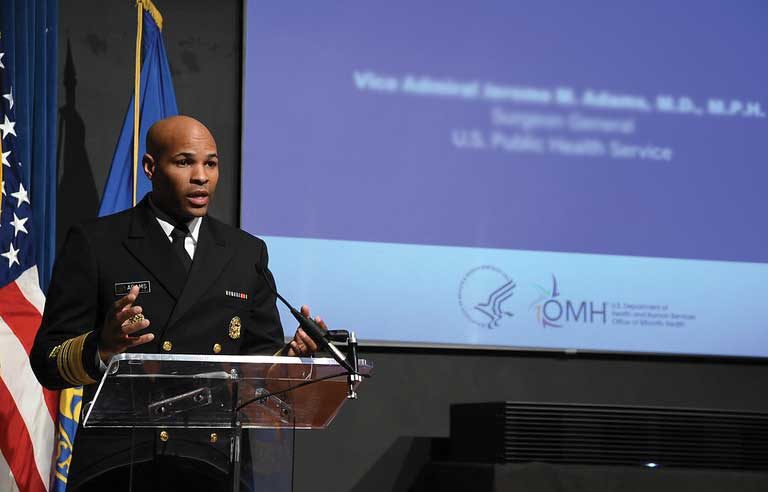Surgeon general to employers: Ramp up your worker well-being initiatives

Washington — U.S. Surgeon General Jerome M. Adams is urging employers to make worker well-being a higher priority, in an article published online Oct. 10 in Public Health Reports – the official journal of the Office of the Surgeon General and the U.S. Public Health Service.
“Healthy and happy employees have a better quality of life, a lower risk of disease and injury, increased work productivity, and a greater likelihood of contributing to their communities than employees with poorer well-being,” Adams writes, citing a 2015 study published in the Journal of Occupational and Environmental Medicine.
For these reasons, he notes, OSHA and the National Academy of Medicine have identified worker well-being as a key national health issue.
To help achieve this goal, Adams writes, public health leaders need to continue to make a strong case to employers that worker well-being programs (including onsite health centers, weight-management programs and financial counseling) benefit their human capital needs and bottom lines.
“Employers and companies need to ensure that workplace programs that address well-being are implemented more broadly, meet employee needs, and produce tangible health and business outcomes,” Adams writes. “Well-being is closely linked with health and productivity. Research shows that employees who are in good physical, mental and emotional health are more likely to deliver optimal performance in the workplace than employees who are not.”
He cites a 2015 report from the Johns Hopkins University Bloomberg School of Public Health showing that participants in workplace health promotion programs had approximately 25% lower medical and absenteeism expenditures than nonparticipants.
Adams also points to the Health Improvement Through Employee Control program, which he said has proven that employee-designed health promotion initiatives have higher participation rates and better health outcomes than initiatives design by administration.
On the federal level, NIOSH’s Total Worker Health approach involves policies, programs and practices that integrate protection for work-related safety and health hazards, with the overarching goal of advancing worker well-being and preventing injury and illness.
“Working together with various employers and other stakeholders, we can achieve a future in which workers are safe, healthy, happy and productive and enjoy every opportunity to attain their highest personal potential,” Adams writes.
Post a comment to this article
Safety+Health welcomes comments that promote respectful dialogue. Please stay on topic. Comments that contain personal attacks, profanity or abusive language – or those aggressively promoting products or services – will be removed. We reserve the right to determine which comments violate our comment policy. (Anonymous comments are welcome; merely skip the “name” field in the comment box. An email address is required but will not be included with your comment.)

